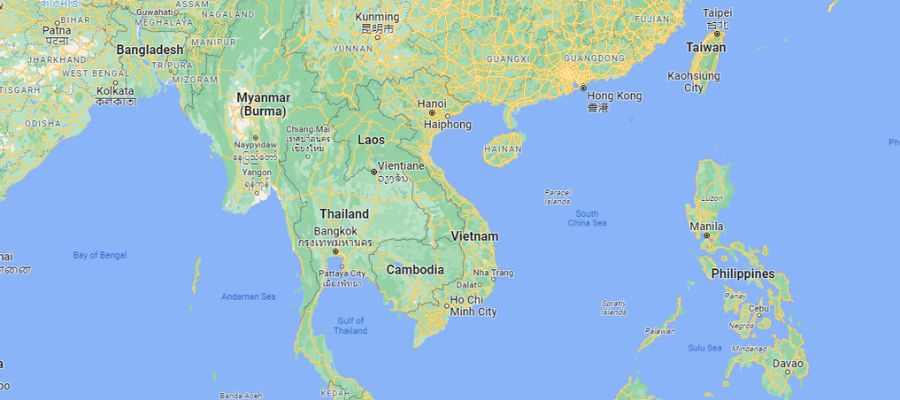The Vietnamese language is a member of the Austroasiatic language family, spoken by over 96 million people worldwide, making it one of the most widely spoken languages in Southeast Asia. Vietnamese is the official language of Vietnam and is also spoken in neighboring countries like Cambodia, Laos, and Thailand. An understanding of Vietnamese speech and language development is crucial for educators considering that it is the second and third most spoken language in many English-speaking countries.
The Vietnamese language uses a writing system that is based on the Latin alphabet, with additional diacritical marks to indicate tones and other sounds. This writing system is known as Quoc Ngu and was introduced in the late 19th century, replacing the traditional Chinese-based writing system that was used for centuries. The Quoc Ngu writing system has helped to increase literacy rates in Vietnam and has also made the language more accessible to foreign learners.
Vietnamese is a tonal language, with six different tones that can change the meaning of words. This makes the language challenging for non-native speakers to learn, but it also gives it a distinctive musical quality. Vietnamese is a very phonetic language, with a relatively simple grammar structure that makes it easier to speak and write.
Vietnamese is the official language of Vietnam and is also spoken by Vietnamese communities around the world, including the United States, Canada, and Australia. Vietnamese immigrants began arriving in the United States in large numbers in the mid-1970s, following the end of the Vietnam War. Today, Vietnamese is one of the most commonly spoken languages in the United States, with over 1.5 million speakers.

Interesting Facts About Vietnamese Speech and Language Development
One interesting fact about the Vietnamese language is that it has been influenced by Chinese, French, and other languages over the centuries. Chinese characters were used in Vietnamese writing for centuries, and many Vietnamese words have roots in Chinese. During the French colonial period, French loanwords were introduced into the Vietnamese language, and these words are still used today. This has made Vietnamese a rich and diverse language, with many different linguistic influences.
Vietnamese Speech and Language Development
Vietnamese Consonants in Comparison to English
| Vietnamese Consonants Not Shared with English | /ɓ/ /tʰ/ /ʂ/ /ʈ/ /ʔ/ /ɣ/ |
| Vietnamese Consonants Shared With English | /p/ /b/ /t/ /d/ /k/ /g/ /f/ /s/ /z/ /tʃ/ /h/ /m/ /n/ /ŋ/ /j/ /l / /w/ |
| English Consonants Not Shared with Vietnamese | /v/ /ʃ/ /ʒ/ /dʒ/ /θ/ /ð/ /ɹ/ |
Vietnamese Vowels in Comparison to English
| Vietnamese Vowels Not Shared with English | /iə̯/ /ɨ/ /ə̆/ /ă/ /uə̯/ |
| Vietnamese Vowels Shared With English | /e//i//o/ /u/ /ɔ/ /ɛ/ /ə/ |
| English Vowels Not Shared with Vietnamese | /a/ /ʊ/ /I/ /æ/ /ʌ/ /ɚ/ |
The Use of Phonotactic Constraints in Vietnamese Speakers
| Patterns of Native Language Influence: | Example: |
|---|---|
| Replacement of voiceless “th” (θ) with /t/ or /s/ in all positions | thumb – tum mouth – mous |
| Replacement of voiced “th” (ð) with /d/ or /z/ in all positions | they – dey the – dee |
| Replacement of /v/ with /b/ in all positions | very – bery |
| Replacement of /dʒ/ (“j”) with /j/ (“y”), or vice-versa, in initial position | yellow – jello judge –yudge |
| Distortion of /ɹ/ in all positions, often resembling a trilled /r/ in initial position | /r/ can be distorted in a variety of ways |
| Omission or substitution of final consonants In Vietnamese, final consonants are voiceless stops (/t/, /k/, /p/ or nasals (/m/, /n/, /ŋ/); whereas, in English, many more consonants are allowed in this position. | Omissions wait – way eat – ee pass – pa Substitutions Off – op Bad – bat Tub – tup |
Language Specific Differences Between English and Vietnamese
| Feature | Vietnamese | English | Examples of Errors |
|---|---|---|---|
| Possessives | Noun + (prepositional phrase containing pronoun) | ____’s (singular nouns) ____s’ (plural nouns) | I took the shoe of him.*/I took his shoe. |
| Adjectives | Adjective follows noun | Adjective precedes noun | The ball red is deflate.*/The red ball is deflated. |
| Plurality | Quantifiers precede the noun to mark plurality | Add an /s/ to the noun to mark plurality | We saw three bird in tree.*/We saw three birds in the tree. |
| Verb tense | Context and addition of words before or after the verb convey the tense | 2 forms in present tense: I eat You eat He eats We eat You all eat They eat 1 form in regular past tense: -ed | I am eat.*/I am eating. She eat.*/She ate. Boy read.*/The boy will read. |
Resources:
Cheng, L. (1991). Assessing Asian language performance: Guidelines for evaluating limited-English proficient students (2nd ed.). Oceanside, CA: Academic Communication Associates.
Hwa-Froelich, D. (2007). Vietnamese speech acquisition. In McLeod, S. (Ed.), The International Guide to Speech Acquisition (pp. 580-591). Clifton Park, NY: Thompson Delmar Learning.
Hwa-Froelich, D., Hodson, B., & Edwards, H. (2002). Characteristics of Vietnamese phonology. American Journal of Speech-Language Pathology, 11, 264-273.
Tang, G. M. (2007).Journal of Southeast Asian American Education & Advancement, 2(1), 1-33.



